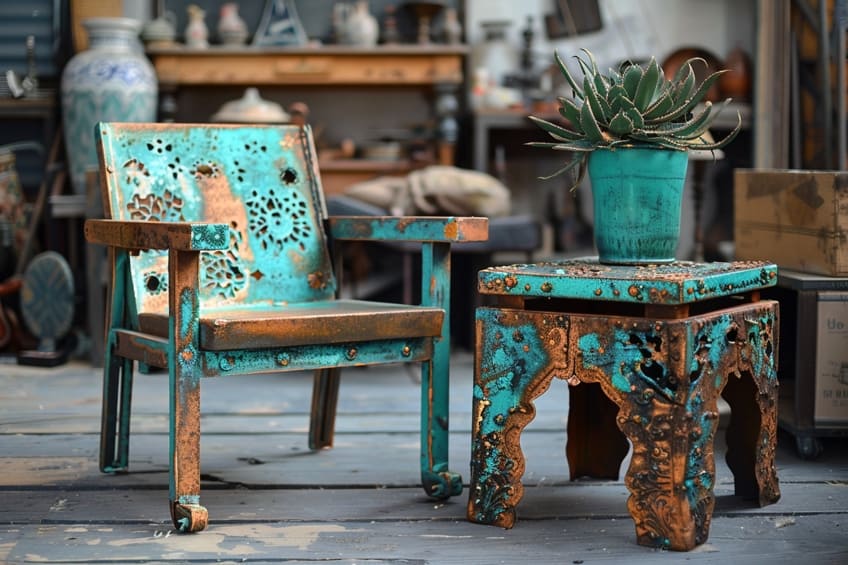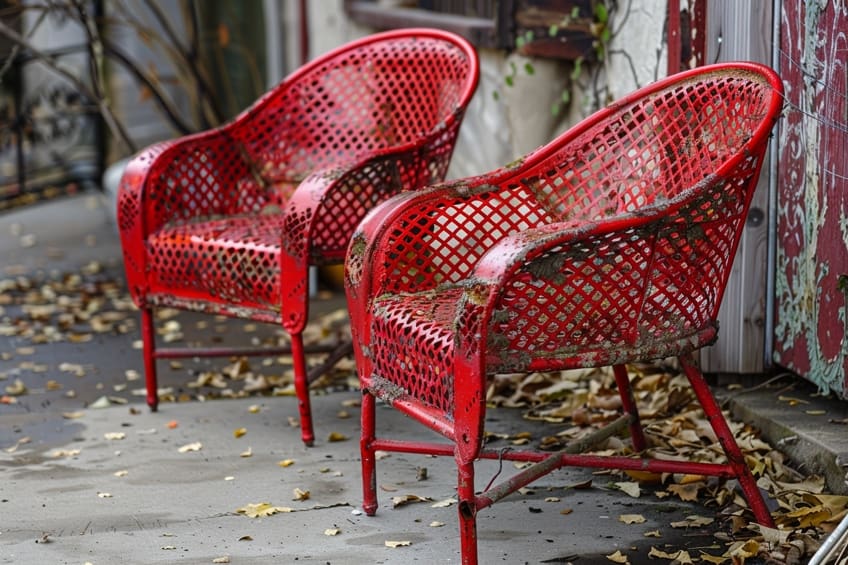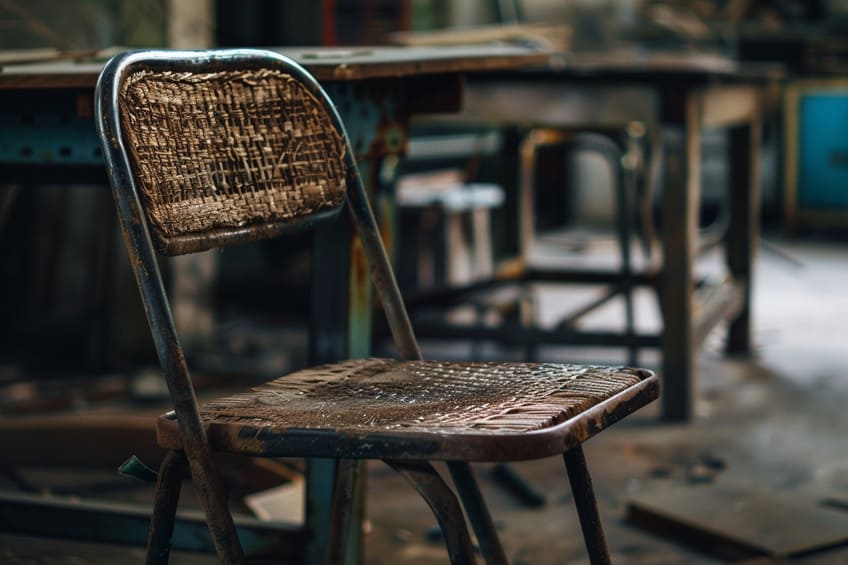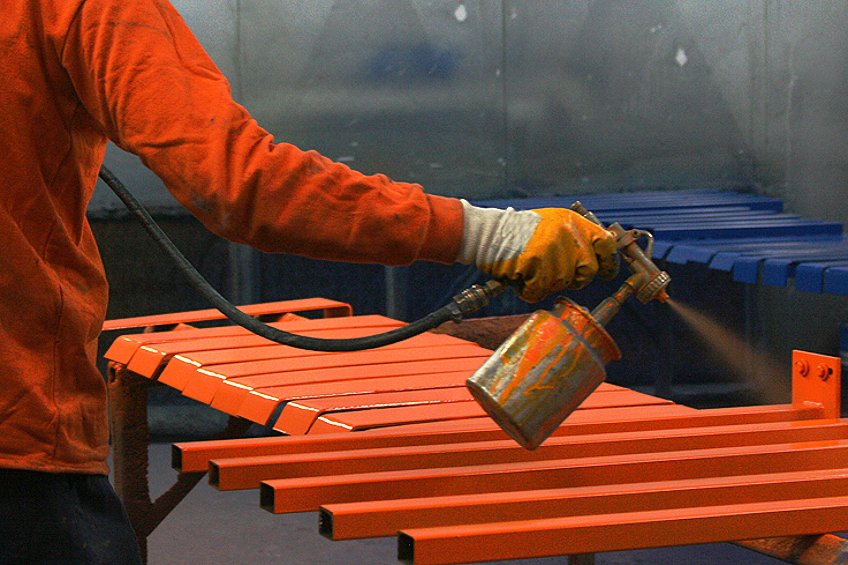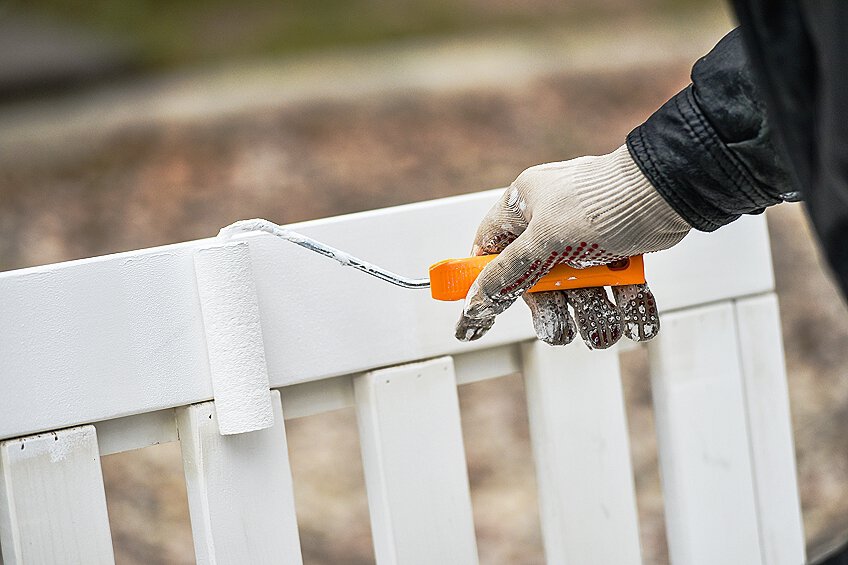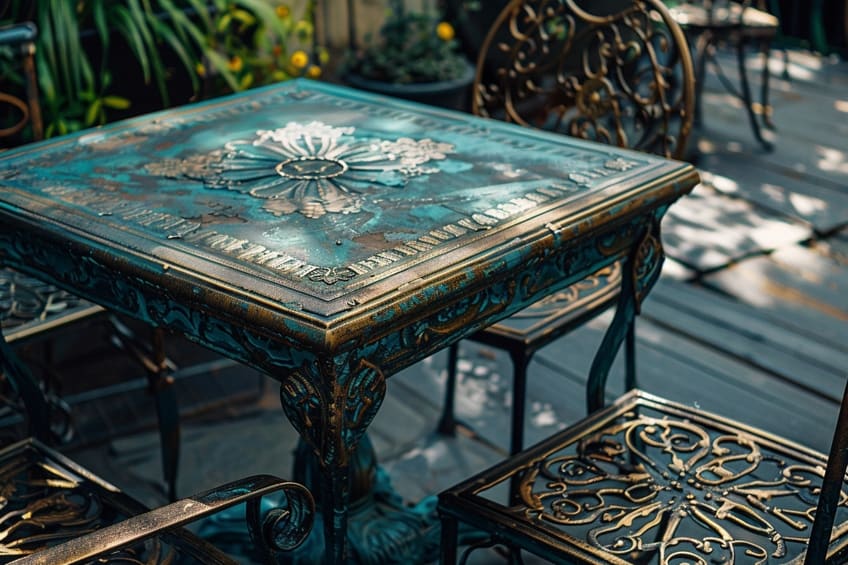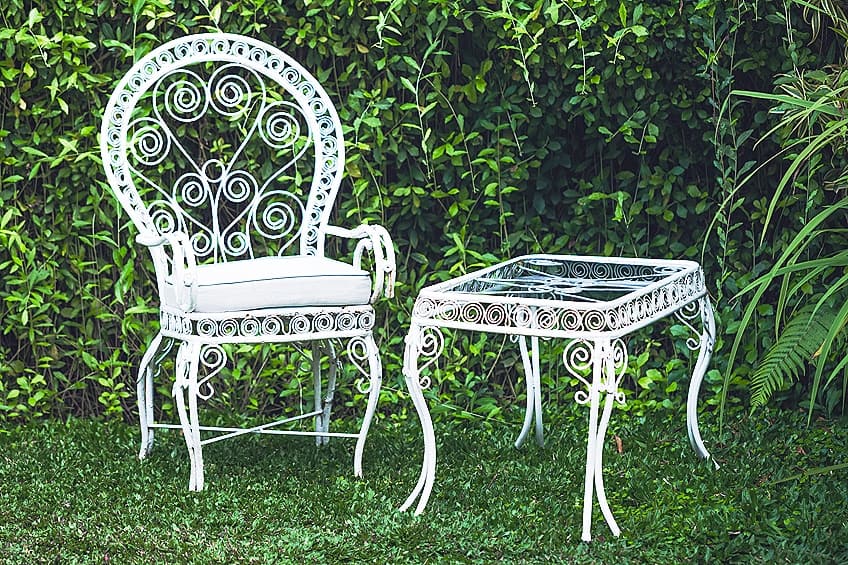How to Paint Metal Furniture – From Drab to Fab
This post may contain affiliate links. We may earn a small commission from purchases made through them, at no additional cost to you. You help to support resin-expert.com
Welcome to the wonderful world of metal furniture transformation! If you’ve got a rusty old chair or a tired-looking table that needs a fresh lease on life, painting is the perfect DIY solution to give it a vibrant new personality. Whether you’re aiming for a sleek modern finish or a charming vintage vibe, painting metal furniture is a fantastic way to unleash your creativity and breathe new life into your living space. With a few handy tips and tricks up your sleeve, you’ll be wielding your paintbrush like a pro in no time, ready to turn drab into fab! So, roll up your sleeves, grab your paint cans, and let’s dive into the colorful world of metal furniture painting!
Table of Contents
Key Takeaways
- Proper preparation of the metal surface is crucial for a high-quality finish.
- Safety gear and a well-ventilated area are essential for health while painting.
- The choice of paint and technique affects both the appearance and longevity of the furniture.
Can You Paint Metal Furniture?
Painting metal furniture is an excellent way to rejuvenate an old piece or customize a new one to match your personal decor. Whether the goal is to restore a weather-worn patio set or add a pop of color to a room, the process is relatively straightforward. The key to a successful metal furniture paint job is thorough preparation and the careful selection of products.
A good start is by assessing the condition of the metal; this may involve cleaning and prepping it to ensure the best adhesion of paint.
- Assessment: Check the metal for any signs of rust or damage. The type of metal determines the kind of paint and primer needed.
- Cleaning: Thoroughly clean all surfaces of the furniture with a suitable cleaner to remove dirt, grease, and any rust.
- Sanding: Rough the metal surface with low-grit sandpaper, around 60-80 grit. This creates a better surface for the primer to adhere to.
- Masking: Use painter’s tape to cover any parts that should remain unpainted, such as hinges or knobs.
Once these steps are completed, one can proceed with the priming and painting stages, using products designed specifically for metal. These products must be suitable for the furniture’s intended use, whether indoor or outdoor. Always ensure the paint and primer selected for the job are formulated to prevent rust, especially if the furniture will be used outdoors.
Safety is paramount when undertaking any painting project. It’s important to work in a well-ventilated area to minimize inhalation of fumes, especially when using spray paints or primers. Using the correct protective gear, such as gloves and masks, can prevent skin and lung irritation. Additionally, knowing the right type of paint and finishing technique can make a significant difference to the final outcome, ensuring durability and resistance to the elements for outdoor furniture.
How to Paint Metal Furniture
Painting metal furniture revitalizes its appearance and protects it from the elements. Proper preparation, choosing the right paint, and using correct application techniques are essential for a quality finish.
Preparing the Metal Furniture
Before painting, one must thoroughly clean the furniture. All rust and peeling paint should be removed, often using a wire brush or sandpaper. If using sandpaper, start with coarser 80-grit and work up to a finer grit for a smooth surface. After sanding, wipe the furniture down with damp rags to ensure it’s free from dust and oils. It may be necessary to apply a primer, especially if the furniture is rusted. Tools and supplies for preparation include:
- Sandpaper (coarse to fine grit)
- Wire brush
- Clean rags
- Primer (for rusted surfaces)
Selecting the Correct Paint
The paint selection is critical for metal furniture. One should opt for paint specifically designed for metal as it will adhere better and withstand wear and tear. These paints often come in aerosol cans for easy application or traditional cans if applying with a brush or roller.
For enhanced durability, consider using a paint with built-in rust inhibitors. Paint options are as follows:
- Spray paint for metal
- Brush-on metal paint
- Paint with rust inhibitors
Application and Tools
The application begins with priming the furniture if necessary, followed by even painting strokes or sprays to cover the metal surface. One should apply multiple thin coats rather than a single thick coat to prevent drips and to achieve a more even finish. Between coats, allow the paint to dry thoroughly. After the final coat, evaluate if a topcoat or sealer is required for additional protection. You will need to following when attempting to paint metal furniture:
- Primer (if needed)
- Paint in the chosen color and appropriate for metal
- Brushes, rollers, or spray paint cans
- Drop cloth or newspapers to protect the surrounding area
- Topcoat or sealer (optional)
Painting and Finishing Techniques
Before starting the painting process, it is essential to select the right type of paint and ensure that the metal furniture is clean and adequately prepared. Durable finishes and regular maintenance will ensure longevity.
Painting Your Furniture
When painting metal furniture, the choice of paint is pivotal for both the appearance and durability. Oil-based paints are appreciated for their toughness and sheen. Acrylic paints and chalk paints, while easier to handle due to their water-based nature, may not be as resilient unless sealed properly. For intricate designs, a paintbrush provides precision, whereas a paint roller or paint sprayer can cover large surfaces more uniformly. Spray paints, specifically formulated for metal, offer convenience and are particularly effective for wrought iron with its many contours, but multiple coats may be required for an even finish.
It’s wise to paint in a well-ventilated area and cover the ground with a tarp or drop cloth to prevent spills.
For optimal results, follow these recommended painting techniques. Firstly, if the surface is rusted, begin by priming it with Rust-Oleum Clean Metal Primer to ensure a smooth base. Next, opt for oil-based or alkyd paint for its durability and long-lasting finish. For a simpler application and faster drying time, apply acrylic paint or latex paint in thin coats. By adhering to these techniques, you’ll achieve a beautifully painted metal surface that stands the test of time.
Mastering spray painting requires attention to detail and technique. Start by shaking the can well to ensure proper mixing of the paint. Maintain a consistent distance between the can and the surface you’re painting to avoid uneven coverage. Opt for multiple thin coats rather than one thick coat to prevent drips and achieve a flawless, smooth finish. With these simple tips, you’ll be wielding your spray paint like a pro in no time, transforming ordinary objects into works of art.
Sealing Your Metal Furniture
After the paint has dried, applying a sealant is crucial to protect the paint from chips and rust. Polyurethane is a popular choice for sealing metal furniture requiring a clear, durable coat over the paint color. For outdoors, look for a sealant that is specifically designed to withstand UV rays and weather conditions.
- Ensure paint is completely dry before sealing.
- Apply a thin, even layer of polyurethane sealant using a clean brush.
- Allow to dry according to the product’s instructions before using the furniture.
Protection and Upkeep
Maintaining painted metal furniture is just as important as the initial paint job. Regular cleaning with a mild detergent will keep the paint looking fresh, and quick touch-ups will address any small areas where the paint or sealant may have worn away. Maintain your metal furniture with ease by cleaning gently and avoiding harsh abrasives. Regular seasonal inspections allow for timely touch-ups of paint or sealant as needed, ensuring longevity and continued charm.
By using the right painting and finishing techniques, and with diligent upkeep, your metal furniture can enjoy a refreshed look and extended durability.
Safety Tips
When painting metal furniture, personal safety is paramount.
- Wear protective gear: Always wear a mask or respirator to avoid inhaling fumes and particulates. Safety goggles are essential to protect the eyes from dust and paint splatters.
- Ventilation is key: Work in a well-ventilated area. If working indoors, open windows and use fans to disperse fumes. The circulation of fresh air reduces the concentration of harmful vapors.
- Handle products with care: Paints and primers can contain harmful chemicals. Follow all manufacturer’s instructions for safe use. When handling such products, one should wear gloves to prevent skin contact.
The table below outlines essential safety equipment required for painting metal furniture. Each item serves a specific purpose, from filtering out harmful dust and fumes with a respirator/mask to protecting skin from chemicals with gloves.
| Equipment | Purpose | Additional Notes |
|---|---|---|
| Respirator/Mask | To filter out harmful dust and fumes. | Ensure it fits properly for effective use. |
| Safety Goggles | To protect eyes from debris and fumes. | Should be anti-fog for clear vision. |
| Gloves | To protect skin from chemicals. | Nitrile gloves are a good choice. |
| Ear Protection | To dampen noise during sanding. | Optional depending on the noise level. |
And there you have it, fellow DIY enthusiasts – a brushstroke of brilliance applied to your metal furniture! As you stand back and admire your handiwork, remember that the transformation you’ve achieved is not just about color and style, but about injecting a piece of yourself into your living space. Whether you’ve opted for bold hues or subtle shades, each coat of paint tells a story of creativity and craftsmanship. So, as you revel in the beauty of your newly painted metal furniture, bask in the satisfaction of a job well done. And who knows? With your newfound painting prowess, perhaps there’s a whole world of DIY adventures waiting just around the corner! Keep those paintbrushes handy and let your imagination run wild!
Frequently Asked Questions
What Type of Paint Should Be Used on Metal Furniture?
One should use a paint specifically formulated for metal surfaces. These usually come in spray or brush-on forms. Enamel paints are ideal for metal furniture due to their durability and rust-inhibiting properties.
Is It Necessary to Sand Metal Furniture Before Applying Paint?
Sanding metal furniture before painting is often recommended. This process helps to create a rough surface that allows the new paint to adhere better, reducing the likelihood of peeling and flaking in the future.
How Can You Effectively Seal Paint on Metal Furniture?
To effectively seal paint on metal furniture, applying a clear sealer or topcoat after the paint has dried is essential. This adds an extra layer of protection against scratches, rust, and weather damage, significantly extending the life of the painted surface.


